Tehnokniga, Part 4: literature on product management, web services development, web project management, business and systems analysis of architects
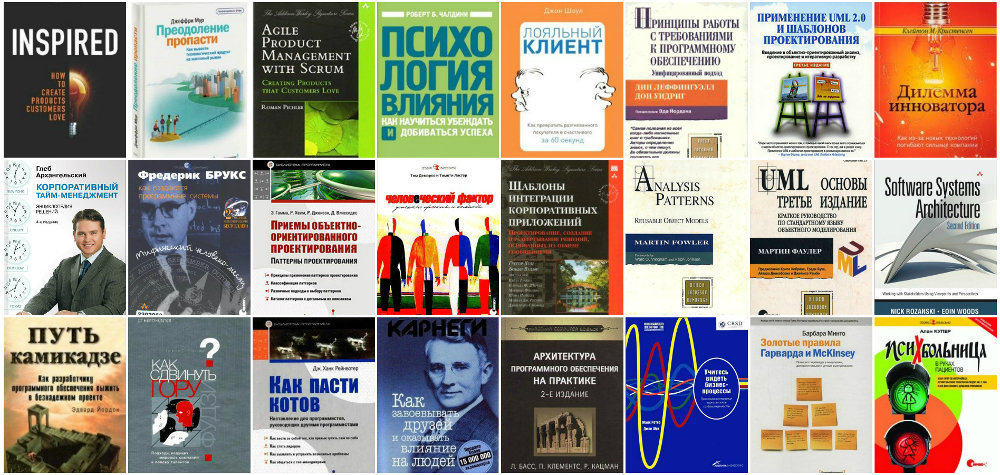
We continue to publish a list of recommended literature for students of Technopark . This time you are waiting for the final part, designed for students of 4 semesters. Previous parts: first , second , third .
Product management
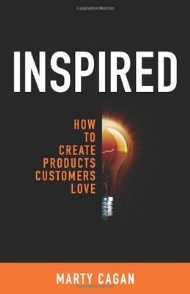
Book: "Inspired: How To Create Products Customers Love"
By Marty Cagan
')
Marty Kegan is one of the co-owners of the Silicon Valley Product Group, which helps to create successful IT companies. Marty was a senior vice president of product management and design at eBay, and before that, a vice president at AOL and Netscape Communications, as well as a software engineer at HPLabs.
In his book, Marty helps answer the following questions:
- how to choose a product to be equal to;
- How to understand whether the product you are asking to create will be successful;
- how to determine the minimum required product to be successful;
- how to solve numerous conflicts with the company's management, customers, vendors, marketers, engineers, designers, etc .;
- how to adapt the agile method to the commercial product environment.
In addition, the book addresses other issues related to the creation of a successful product.

Book: “Bridging the Abyss. How to bring a technological product to the mass market "
By: Jeffrey A. Moore
Jeffrey Moore is the author of several business bestsellers, including Overcoming the Abyss, Inside the Tornado, Playing Gorillas, Life on the Fault Line, Second Space. His interests include research on the growth and development of markets, their impact on the business strategies of companies. Moore’s ideas are based on his experience as a consultant in Silicon Valley — first with The McKenna Group, and later with The Chasm Group he founded. Moore received a bachelor's degree in American literature from Stanford University (1967) and a doctorate in English literature from the University of Washington (1974).
The book is devoted to issues of marketing and sales of high-tech products in the mass market. The author argues that the early and mainstream market of high-tech products divides the abyss, to overcome which all the forces of a high-tech enterprise should be directed. The existence of the abyss is due to significant differences between the participants of the early market (technological enthusiasts and visionaries) and the participants of the mass market (pragmatists). In the book of Jeffrey Moore you will find tips on overcoming these differences, good positioning and the right choice of market segments.
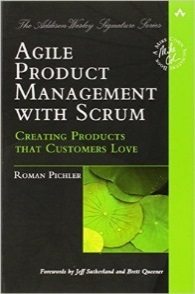
Book: Agile Product Management with Scrum: Creating Products that Customers Love
Posted by: Roman Pichler
Roman Pichler is one of the experts in applying Lean and Agile methodology for product management. He is the author of several books on this topic, as well as a consultant on the creation of effective product management systems.
The book is based on real-world examples of how to create a successful product using Scrum methodologies. Describes a wide variety of approaches to product management using flexible methodologies. You will also learn how developers who use the Scrum methodology differ from others, and how to overcome the difficulties faced by everyone who uses Scrum to create a product.
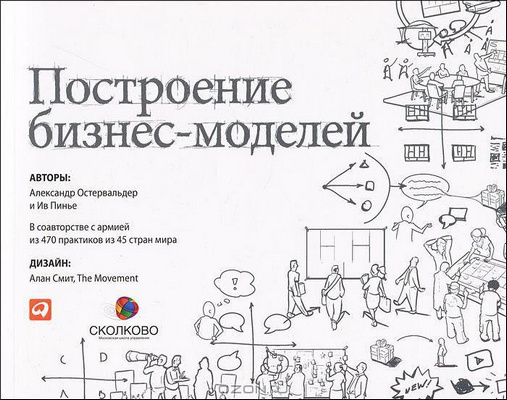
Book: “Building Business Models. Handbook of strategist and innovator »
Authors: Alexander Ostervalder, Yves Pigne
Alexander Ostervalder writes books, lectures, and advises on innovative business models. His practical approach to the design of innovative business models, developed jointly with Dr. Yves Pigne, is used in many industries around the world, in particular, by 3M, Ericsson, Capgemini, Deloitte, Telenor and others.
The book describes the original concept of analyzing, building and improving business models, which is used by the largest companies in the world, including Google, IBM, Ericsson. The authors offer a simple and understandable way to visualize the basic elements that reveal the logic of the chosen method of extracting profits. A sheet of paper and a block of stickers are all you need to master the author's method of creating business models. This approach allows you to get an overall strategic picture of the business, minimizing the discussion of specific tactical steps. The technique helps to present the work of the organization as a whole, rather than a set of separate functional units and production operations.
Web services development
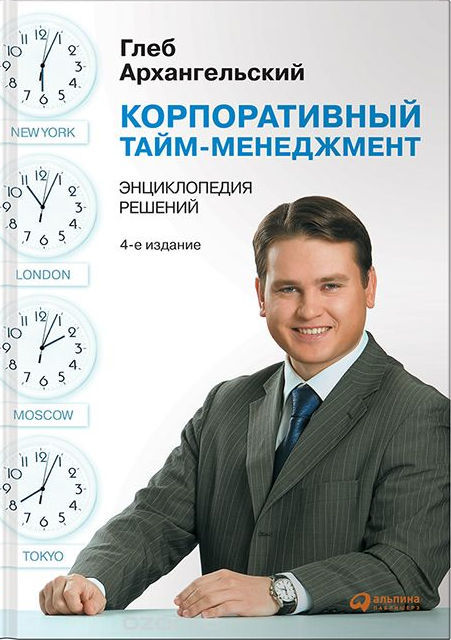
Book: Corporate Time Management
Author: Gleb Arkhangelsk
Gleb Arkhangelsky is the founder of the Russian school of time management, the leading Russian expert in the field of time management, the author of books and video courses, including Corporate Time Management: Encyclopedia of Solutions and Time Management. Training apparatus". Head of the Time Management Department of the Moscow Academy of Finance and Industry, Ph.D. in Economics, Project Manager for Time Management Implementation at RUSAL, RAO UES, Severstal, PricewaterhouseCoopers, Wimm-Bill-Dann, etc. Creator of the Internet project www.improvement. ru .
To achieve success, managers of organizations need to constantly improve their performance - their own and their subordinates. This can be achieved with the help of time management - time management. His philosophy is not to work as much as possible, but to successfully cope with professional and personal tasks, manage everything, and thus make your life harmonious. The book describes convenient practical tools that will help bring the ideas of time management to life. Numerous practical cases will introduce you to the experience of the largest Russian corporations that have implemented time management in their practice.
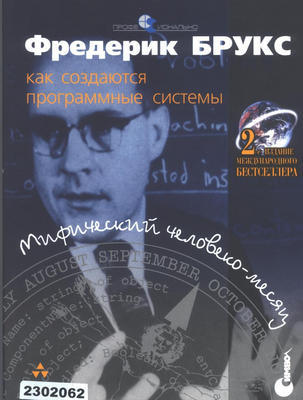
Book: "Mythical Man-Month, or How Software Systems are Created"
Authors: Frederick Brooks
Frederick Brooks is a professor of computing at the Kenan School of Business at North Carolina State University in Chapel Hill. He is known primarily as the father of IBM System / 360. In addition, Brooks designed the Strtch and Harvest computers at IBM. Dr. Brooks was a member of the national and military committees on science, founded the faculty of computer technology at Chapel Hill, and headed it from 1964 to 1984. He currently teaches and also conducts research in computer architecture, molecular graphics, and virtual environments.
The first edition of this book was written by Frederick Brooks back in 1975. This is one of the required books for each developer, regardless of his status in the company. The main theme of the book is that the introduction of new forces in the project at the later stages of development only postpones the deadline for the delivery of the project. This idea became known as the "Brooks Act."

Book: Object-Oriented Design Techniques. Design Patterns »
Authors: Erich Gamma, Richard Helm, Ralph Johnson, John Vlissides
Erich Gamma is a programmer, a leading developer of JUnit and Eclipse . He worked at IBM on the project Jazz. Since 2011, he has led the Microsoft Visual Studio development team in Zurich, Switzerland.
Richard Helm is a member of the Object Technology Practice Group in the IBM consulting division in Australia.
Ralph Johnson is a professor in the Department of Computational Science at the University of Illinois. One of the old-timers of the Smalltalk programming community.
John Vlissides has been a software engineer, consultant and researcher at Stanford University since 1986. Since 1991, he worked in one of the IBM research centers.
The book describes the simple and elegant solutions to typical problems arising in object-oriented design. Patterns appeared as a result of the search by developers for ways to increase the flexibility and reuse of their programs. The solutions found are summarized and easily applicable in practice. The authors set out the principles for the use of design patterns and list their catalog. The book demonstrates their role in creating the architecture of complex systems. Using the patterns contained in the reference book, the designer can easily develop his own applications.
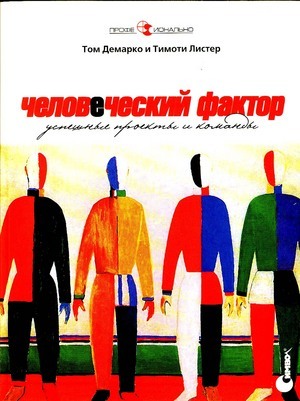
Book: “The human factor. Successful projects and teams »
Authors: Tom DeMarco, Timothy Lister
DeMarco and Lister are heading the Atlantic Systems Guild consulting company with branches in New York and London. Since 1979, they have lectured together, write books and articles, and consult projects around the world, specializing in assessments, productivity, leadership, and corporate culture.
Tom DeMarco specializes in project management and methodology. Timothy Lister teaches, journalism and advises on risk minimization in software development projects, and also participates in resolving software issues at the U.S. Arbitration Association and is on the Airlie committee of the United States Department of Defense project managers network.
The value of this book is that it describes the principles, behind each of which is the real story. All chapters contain observations and innovative approaches that will force readers and managers to see important issues in a new, more reasonable perspective. With the humor and wisdom gained through years of leadership and consulting, DeMarco and Lister demonstrate that the most complex software development problems are of a human, not a technical, nature. They do not give simple answers, but they give the correct answers, supported by scientific research.

Book: “The path of the kamikaze. How a software developer can survive a hopeless project. ”
Posted by: Edward Youdon
Edward Yourdon is the author and co-author of more than two dozen books. In June 1977, he was officially declared a member of the Hall of Fame of computers, uniting such outstanding people as Charles Babbage, Seymuk Cray, James Martin, Grace Hopper, Gerald Weinberg and Bill Gates.
Widely known as the co-author of the popular methodology Cowd / Yordon, he created and headed YOURDON - a consulting company that has already trained more than 250 thousand people all over the world.
Almost every software developer and manager has to deal with projects that are doomed to failure. In the context of corporate reengineering, hopeless projects become the “lifestyle” of many organizations. Edward Youdon's book - a guide to solving the following problems:
- survival in projects doomed to failure;
- reaching optimal agreements during negotiations;
- personnel management and prioritization;
- selection of tools and technologies;
- determining the moment when it is time to leave the project.

Book: "How to move Mount Fuji? Approaches of leading world companies to search for talents ”
Posted by: William Poundstone
William Poundstone is the author of a number of books, a columnist. He wrote for The New York Times, Psychology Today, Esquire, Harpers, The Economist and the Harvard Business Review. He studied physics at the Massachusetts Institute of Technology.
The method of interviewing when applying for a job at Microsoft, based on solving problems and puzzles, is now adopted by many companies wishing to identify the most creative candidates among those who are simply capable. The book presents this technique and offers more than 30 difficult tasks and puzzles. Here it is shown how, with the help of effective creative and analytical thinking, one can find answers to the most non-standard questions.

Book: “How to feed cats. A guide for programmers leading other programmers. ”
By: J. Hank Rainwater
Hank Rainwater works for the Risk Sciences Group (Atlanta, GA), where he leads a group of programmers who develop software for insurance companies. At different periods of his life, he programmed in Fortran using punched cards, taught college mathematics, did research in the fields of radio astronomy, missile guidance systems and telemetry systems, coordinated the production of embedded digital control systems. As a specialist in software development, Hank managed to work as a consultant, lecturer, programmer and head of software development teams for various fields of human activity.
This book is about leadership and leadership, about how to combine the first with the second. A programmer is like a cat that walks by itself — that’s historically so. That is why it is so difficult to be a team leader. Even if a month ago you were a brilliant and disciplined programmer, and suddenly you were in a managerial role, you hardly know where to start, which leadership style to choose, how to hire and fire employees, how to conduct meetings, to achieve timely completion of tasks. Or maybe you - an experienced manager who wants to revise their principles of leadership? Then again this book is for you. Regardless of age, gender and social status, she will help strengthen her position as a programmer leader.
Web project management
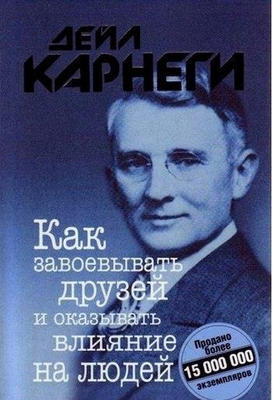
Book: "How to win friends and influence people"
Posted by: Dale Carnegie
Dale Carnegie - a psychologist, a writer. He stood at the origins of the creation of the theory of communication, transferring the scientific developments of psychologists of the time into the practical field, developing his own concept of conflict-free and successful communication. Developed psychological courses on self-improvement, effective communication skills, speeches, etc.
This is the most famous book by Dale Carnegie, published in 1936 and published in many languages of the world. It is a collection of practical tips and life stories. Carnegie makes extensive use of quotes from famous successful people and cites as an example the experience of his students, friends and acquaintances. In less than a year, more than 1 million copies of the book were sold (even during the author’s lifetime, more than 5 million copies were sold in the USA alone). For ten years, the book has been on the New York Times bestseller lists, which is still an absolute record.

Book: "The Psychology of Influence"
Posted by: Robert Cialdini
Robert Cialdini is an experimental social psychologist. He studied at the universities of Wisconsin and North Carolina. He studied at the graduate school at Columbia University. Throughout his research career, he worked at the University of Arizona. He was a visiting professor and researcher at Ohio State University, at the University of California at San Diego, at the University of California at Santa Cruz, at the University of Southern California, at Stanford University. In 1996, Cialdini was president of the Society for Personality and Social Psychology. Winner of various awards in the field of social psychology, consumer psychology, teaching psychology.
The art of persuasion can be treated differently. Some seek to master it perfectly, to always and everywhere achieve their goals. Others consider the use of mechanisms of influence with the aim of imposing conditions unfavorable for people unacceptable. However, no one wants to become a victim of manipulators, easy prey for sellers, fundraisers and advertisers. In this book, Robert Cialdini, Ph.D., a professor of psychology and a recognized expert in the sphere of influence and persuasion, discusses six universal techniques by which you will become a real master of persuasion. At the same time, knowing these techniques, you can always avoid unwanted exposure from the outside.

Book: “Loyal Customer: How to turn an angry customer into a happy one in 60 seconds”
Posted by: John Shoal
John Shole is a specialist in the field of service culture, author of books and educational programs, a motivational speaker, and a businessman. For over 40 years, he has been advising world leading companies in the implementation of a service strategy. In 1979, he developed the world's first client training program. Founder and President of the Service Quality Institute, the program of which trained more than 2 million people in 40 countries of the world. Member of the National Association of Professional Speakers of the United States and the Society of Professionals to work with US consumers.
Everybody makes mistakes, even leading companies. How employees correct these errors is what makes service leaders different from all the others. Compensation is more than an apology. To compensate means to give the client something valuable, thereby showing that it is really important to you. Satisfied and loyal customers will not only stay with you, but will advertise your products to everyone around. In this book, John Shoul, a recognized service guru, provides specific recommendations and gives examples of how to create a compensation system in the company aimed at building customer loyalty.
Business and Systems Analysis for Architects

Book: “Principles of working with software requirements. Unified approach "
Authors: Dean Leffingwell, Don Widrig
Dean Leffingwell is an entrepreneur, writer, and methodologist consultant. Founder of ProQuo, a research and marketing company. Engaged in the use of Agile-methodologies in large software development projects.
Don Wiedrig - freelance writer, consultant. Developed a training course for software developers. He was vice president of research and development at RELA, a company engaged in the creation of real-time systems.
The book is devoted to the formation of requirements and work with them in the development of complex software systems. Lack of attention to this aspect of development can lead to cost overruns, delaying the implementation of the project or even its complete failure. The authors propose well-proven methods for identifying, documenting, implementing, and testing requirements, using both precedents and more traditional methods to describe them. Special attention is paid to understanding user needs, determining the scope of the project, and processing changes. All steps are illustrated by a discussion of a full-scale working example.
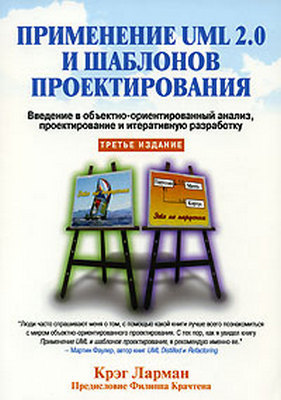
Book: Application of UML 2.0 and Design Patterns. Introduction to object-oriented analysis, design and iterative development "
Posted by: Craig Larman
Craig Larman is a specialist in computational sciences, he is involved in iterative and incremental development, using Agile methodology, object-oriented analysis and design.
The book discusses the basic principles and techniques of object-oriented analysis and design (OOA / P). In it, you will find information on iterative and flexible modeling, on design patterns, on architectural analysis, etc. All material is considered in the context of a flexible approach to development with the combined use of the UP process and other iterative methods.

Book: “The Dilemma of the Innovator. How are strong companies dying due to technology? ”
Author: Clayton M. Christensen
Clayton M. Christensen is a researcher, professor at Harvard Business School, author of 11 business bestsellers. He studied in detail the way of life of technological innovations in the production of various products and came to a disappointing conclusion: large companies always lose to small ones when it comes to something new. His main works are devoted to the creation and implementation of "subversive" innovation.
This book is about how industry leaders go bankrupt when they occupy a new niche in the market or when the latest technology begins to dominate the market. The author, using convincing examples, proves that it was during the take-off period that the leadership should be most attentive to its company, since this period is fraught with financial losses and even complete collapse.

Book: Corporate Application Templates
Authors: Martin Fowler, David Rice, Matthew Fommel, Edward Hyatt, Robert Mee, Randy Stafford
Martin Fowler is the author of several books and articles on software architecture, object-oriented analysis and development, the UML language, refactoring, extreme programming, subject-oriented programming languages.
Creating computer systems is far from simple. As their complexity increases, the process of designing the corresponding software becomes more and more labor-intensive, and labor costs grow exponentially. As in any profession, progress in programming is achieved solely by learning, not only from mistakes, but also from the successes of both our own and others. The book provides answers to difficult questions that all corporate systems developers have to face.

Book: "Analysis Patterns: Reusable Object Models"
Posted by: Martin Fowler
Analytical templates are highly organized logic circuits that can be used in a variety of projects and computer systems. The book describes over 70 templates used in many companies around the world.
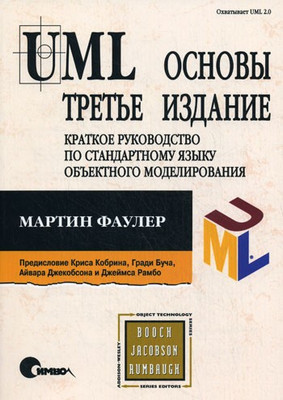
Book: “UML. The basics. Quick Guide to Standard Object Modeling Language »
Posted by: Martin Fowler
The book remains the best guide to the application of UML. Its main advantage lies in a brief and concise summary of the essence of UML and the features of using this language in the modern software development process. The book describes all the main types of UML diagrams, explains what they are intended for and what notations are used to create and read them. These are class diagrams, sequences, objects, packages, deployment, use cases, states, activities, composite structures, components, interaction overview, communication and time.
Fowler not only describes the key aspects of UML in a clear and accessible manner, but also clearly shows the role of UML in the development process. Remarkable examples of modeling are the result of many years of experience of the author in the field of design and modeling.

: «Software Systems Architecture: Working With Stakeholders Using Viewpoints and Perspectives»
: Nick Rozanski, Eóin Woods
— IT- . 30- — .
— .
. :
- , ;
- , , , ;
- ;
- , .

: « »
: , ,
— NICTA, . 25 . 50 , .
— .
— . , , , . . .
, , , , , , , .

: « -. »
: ,
— , , . , , , .
, . , .
, -, — . - , , , . , , .
, — . , , , , , , . , , . Toyota.

: « . , »
:
1963 . - McKinsey & Company, . 1966 . . - , , , .
. , , . , . : -, .
« » , , , , , , , , .

: « »
:
— , , . «» Visual Basic. 15 , . , Fortune 500, , , , , , , . Cooper , . 2005 . (IxDA, www.ixda.org ) — , . Bose Corporation.
, ? , , — , , , , , , , — . , , . : .

: « »
:
— . Humans and Technology, - . 20 , , , IBM.
The practice of creating use cases as a means of clarifying the requirements for the behavior of software systems and business processes is quickly gaining popularity. At first glance, the idea of options seems simple. However, the developers will have a difficult task: starting to create a set of use cases, you need to find out how accurate they should be.
This book serves as the newest practical guide to writing use cases. Here are the initial, intermediate and developed concepts, so the book is suitable for readers with different levels of training. The instructions are supported by illustrative examples and exercises.
Source: https://habr.com/ru/post/268395/
All Articles